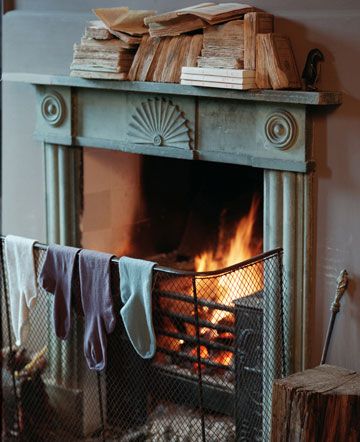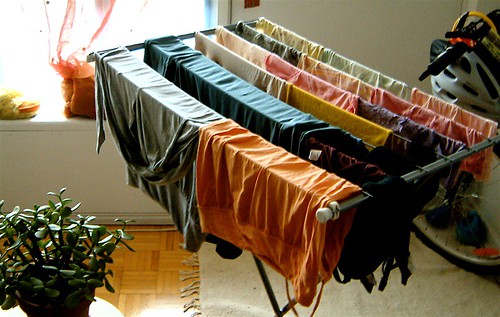It wasn’t so long ago that people hand-washed clothes, and used a mangle to ring them out. Washing machines only began to appear in households during the 1960s. Drying was either in the open air, or put near a fireplace (central heating was not widespread until the late 1970s). Washing clothes was time-consuming and labor intensive, and naturally meant that clothes weren’t washed as often as today. While the washing machine liberated 50s and 60s women from a domestic chore and saves us all time, frequent laundering is taking its toll on the environment.

The past 70 years have seen a massive change in the materials used for clothing, our consumption habits, and a garment’s lifespan. In the first part of the 20th century, winter clothing staples were mostly woolen and would only be washed occasionally, and spot cleaned in between. People owned fewer clothes and looked after them. Since the 60 years textile waste has increased 811% and is often made from plastic.
With more clothes in our wardrobes – and easily washed synthetics, the average household use has risen to 4-5 washing cycles a week – with each one using around 50 litres of water. To put that in perspective, that’s the same amount as the WHO’s suggested minimum for basic sanitary, bathing, cooking, clothes-washing and drinking needs. In Britain, the average per person is three times that amount – 150 litres a day.
Also problematic is the high consumption of energy used for washing and drying clothes. Most of the energy of a laundry load is used up in heating the water (90%) – hence the environmental campaigns to encourage washing at 30C. And tumble dryers are even more energy hungry. Certainly for city living in small spaces and no outdoor space, a dryer is a solution, but unfortunately not a climate solution.
With the trend in city living continuing, the issue of where to dry clothes isn’t going away. While sunnier countries often have roof terraces where residents can hang washing out, this is not the case in Britain. Given the climate, perhaps a covered roof terrace could be part of a solution to urban laundry needs, or a drying room which uses dehumidification and air circulation to dry clothes. Such methods would also save clothes from wear and tear caused by a tumble dryer, but could also have a positive social impact. It’s not uncommon for people not to know their neighbours, and communal areas in apartment blocks could foster better relationships in society.
The climate emergency requires us all to start using water and electricity more carefully. Reducing the number of laundry loads seems like a good place to start, and in the meantime, for those like me with no space to hang clothes out, perhaps a clothes pulley is the way forward.


